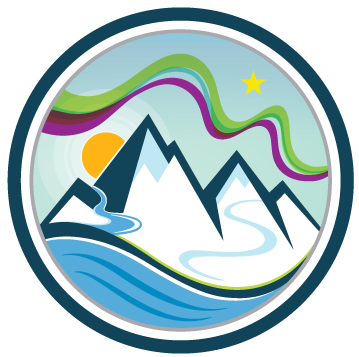Upper Iditarod Trail
 Hiking and Biking
Hiking and Biking
 1-4 hours
1-4 hours
 3 miles
3 miles
 Approx 700ft
Approx 700ft
Good for a Hike but difficult for Biking
The trail is great for walking and running but biking the entire length of the trail is very difficult. There are lots of roots and low muddy spots making it a very technical ride. The elevation is fairly moderate with a steady climb towards Winner Creek.
There is decent riding at the beginning by the school and closer to Winner Creek but the middle section is loaded with roots making it non-ridable. The trail by the elementary school starts off with an excellent view of Glacier Creek and Alyeska Mountain and then proceeds in the canopied forest. This trail follows Crow Creek Road and will sometimes cross it.
Getting There
The best location to access the upper Iditarod trail is at the Winner Creek Trailhead parking lot, which is 3 miles up Crow Creek Road. You will find the trail downhill of the parking lot. There are also multiple pull-outs along Crow Creek Road and you will find the trail in the forest. Also, you can access the trail from behind the Elementary School through the playground.
History
The Iditarod National Historic Trail was developed in Alaska as a way for communities and miners to connect especially during the Gold Rush Era Days. Local native trails were used as the guideline and creation for the Iditarod Trail. This network of 2,300 winter trails connected Alaskan villages together to transport needed supplies and mail with dog teams and sleds. The original trail started in Seward and headed north through Girdwood, over Crow Creek Pass to Knik. From there it transitioned over the Alaska Range through Rainy Pass to McGrath and then to Ophir. The trail today is used as a recreation and sports corridor.
Most people associate Iditarod with the famous dog race. The “Last Great Race” was started in 1973 by Joe Redington, Sr. The event was created to test the best sled dog mushers and teams but evolved into today's highly competitive race. The race starts the first weekend in March in Anchorage. The Iditarod Race ends in Nome after 998 miles of grueling conditions through snow, rain, and blizzards.
Winter Use
This trail is used all year long. It is not as popular as the lower Iditarod Trail but it does get quite a few walkers. After a fresh snowstorm, people will nordic ski and snowshoe the trail. Riders will use their fat bikes during hardened conditions.



Seward Highway is a National Forest Scenic Byway and one of 15 roads in the United States that have been designated as an "All-American Road.”